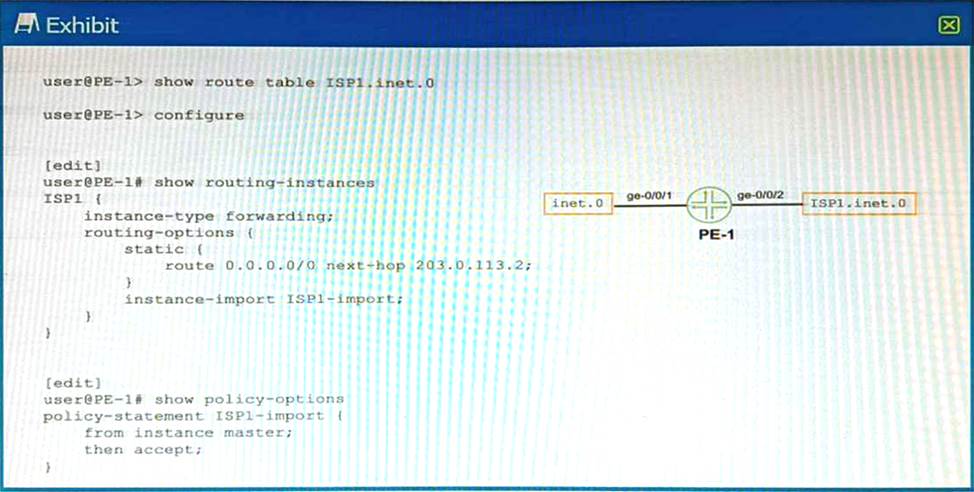- All Exams Instant Download
What will happen when you commit the configuration shown on the exhibit?
Exhibit.

The ispi _ inet. 0 route table has currently no routes in it.
What will happen when you commit the configuration shown on the exhibit?
A . The inet. 0 route table will be completely overwritten by the ispi . inet. 0 route table.
B . The inet. 0 route table will be imported into the ispi . inet. 0 route table.
C . The ISPI . inet. 0 route table will be completely overwritten by the inet. o route table.
D . The ISPI . inet. 0 route table will be imported into the inet. 0 route table.
Answer: B
Explanation:
The configuration shown in the exhibit is an example of a routing instance of type virtual-router. A routing instance is a collection of routing tables, interfaces, and routing protocol parameters that create a separate routing domain on a Juniper device1. A virtual-router routing instance allows administrators to divide a device into multiple independent virtual routers, each with its own routing table2.
The configuration also includes a rib-group statement, which is used to import routes from one routing table to another. A rib-group consists of an import-rib statement, which specifies the source routing table, and an export-rib statement, which specifies the destination routing table.
In this case, the rib-group name is inet-to-ispi, and the import-rib statement specifies inet.0 as the source routing table. The export-rib statement specifies ispi.inet.0 as the destination routing table.
This means that the routes from inet.0 will be imported into ispi.inet.0.
Therefore, the correct answer is B. The inet.0 route table will be imported into the ispi.inet.0 route table.
Reference:
1: Routing Instances Overview 2: Virtual Routing Instances : [rib-group (Routing Options)]
Latest JN0-351 Dumps Valid Version with 110 Q&As
Latest And Valid Q&A | Instant Download | Once Fail, Full Refund
Subscribe
Login
0 Comments
Inline Feedbacks
View all comments

